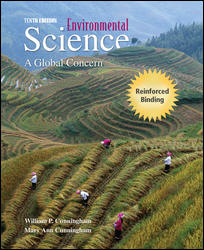1 A) total about 70 million Americans. B) are concerned about the environment and want products to be produced in a sustainable way. C) are strongly aware of environmental problems and want to do something to remedy them. D) are characterized by all of the above. 2 A) (ital)A Sand County Almanac(/ital), by Aldo Leopold, B) (ital)The Population Bomb(/ital), by Paul Ehrich, C) (ital)Walden(/ital), by Henry David Thoreau, D) (ital)Men and Nature(/ital), by George Perkins Marsh, 3 A) understands that environmental issues are underlain by scientific facts and concepts. B) gets involved in the improvement and restoration of environmental quality. C) understands that human society is influencing not only the environment but the tools to be used to address these issues. D) does all of the above. 4 A) using an item as long as possible. B) minimizing car use by car pooling, biking, or using public transportation when possible. C) minimize purchase of disposable items. D) all of the above. 5 A) recycled paper products. B) energy efficient appliances. C) cars that get high gas mileage. D) all of the above. 6 A) civil disobedience has a long history of success. B) when no other ways of producing change are available, confrontation is the last resort. C) some situations make it morally necessary. D) might makes right. 7 A) increased government regulation of industries causing pollution. B) unlimited access to resources. C) increased fines and penalties for violators of environmental laws. D) more than one of the above. 8 A) occupy every economic level in society. B) are neither more liberal nor conservative than the U.S. average. C) are found working at all kinds of different jobs. D) are characterized by all of the above. 9 A) stabilization of world population. B) a shift to higher efficiency of energy use. C) increased reliance on renewable resources. D) all of the above. 10 A) voluntary simplicity. B) embracing biocentrism. C) active participation to protect nature. D) all of the above. 11 A) resulted from action by the United Nations. B) states that we all share responsibility for caring for life's diversity. C) advocates eradication of poverty. D) is characterized by all of the above. 12 A) TRUE B) FALSE 13 A) TRUE B) FALSE 14 A) TRUE B) FALSE 15 A) TRUE B) FALSE 16 A) to improve understanding amongst the general public of the environment B) to encourage students to pursue careers related to the environment C) Both answers are correct 17 A) an understanding of the principles of ecology B) an attempt to establish a stewardship ethic C) an initiative to promote journalists to write more about environmental issues D) 1 and 2 are correct 18 A) critical mass B) citizen science C) using Greeting Cards with images of rare species to promote conservation D) None of the above 19 A) to refer to the concept of purchasing things to impress others B) a century ago C) in the 1950's when consumption began to increase and family size began to decrease D) 1 and 2 are correct E) 1 and 3 are correct 20 A) People have made unprecedented changes to ecosystems B) Changes to the environment have improved the lives of billions C) All of us depend on nature and ecosystem services D) All of the above are correct





